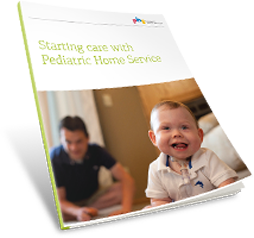Studying Home Nasogastric Feedings in Children

Roy C. Maynard, M.D., is the Medical Director for PHS. He serves as PHS’s clinical leader, working with the team to provide consultation and advice to ensure quality and effective care to children and their families in their own homes. He also leads implementation of clinical policies, procedures and programs to further enhance the best possible care for each child. He is a Neonatologist and Pediatric Pulmonologist, and serves as a staff physician at Children’s Hospitals and Clinics in Minneapolis, Minn.
Increasing numbers of children with medical complexity (CMC) are being discharged home from children’s hospitals across the US, and a substantial portion of these children require medical technology to thrive at home. One of these technologies includes enteral nutritional support through a gastrostomy tube (GT) or nasogastric tube (NG).
When an NG tube is necessary
Adequate nutritional support of children is important for growth and healing. Children with prematurity and/or chronic illnesses may have special nutritional requirements that cannot be met by their own oral intake. If this requirement is lifelong, placement of a gastrostomy tube may best meet the needs of the child.
Nasogastric tube feedings is a short-term intervention to prevent malnutrition for those children with potential for improving their oral-motor skills or whose clinical status is improving. Home NG feedings may help decrease costs associated with prolonged hospitalization, facilitate nurturing at home with family, and be provided safely.
Feedings in an outpatient setting
Though nasogastric tubes are commonly used in a hospital setting, there is a paucity of data on the safety and outcomes of NG feedings in pediatric outpatients. A recent retrospective study1 on patients discharged from a neonatal intensive care unit identified that 18 out of 71 technology dependent patients were discharged to home with supplemental NG feeds. One year follow-up of a smaller cohort of study patients revealed those with NG’s had less emergency room visits and re-hospitalizations than those discharged with GT’s.
Another retrospective study 2 published in 2016 from a single medical center identified 87 patients discharged to home with NG feeds. The average age was 1.2 years and the most common diagnosis was congenital heart disease. The average time until discontinuation of NG feeds was 4.8 months for those that transitioned off. There were no adverse events associated with home NG feeds.
Studying standards and outcomes
In 2017, PHS will be conducting a prospective observational study of pediatric outpatients using NG feedings. This study will be approved by an Institutional Review Board. Families of patients with home NG feedings and utilizing PHS services will be asked to consent to provide information. The purpose of this study will be to document the standard of care in our community as well as safety and outcomes of children discharged from hospitals with NG feedings.
1Toly VB, Musil CM, Beida A, et al. Neonates and Infants Discharged Home Dependent on Medical Technology: Characteristics and Outcomes. Adv Neonatal Care. 2016 Jun 7.
2Rosen D, Schneider R, Bao R, et al. Home Nasogastric Feeds: Feeding Status and Growth Outcomes in a Pediatric Population. JPEN J Parenter Enteral Nutr. 2016 Mar;40(3):350-4. doi: 10.1177/0148607114551967.
Originally published: July 15, 2016


